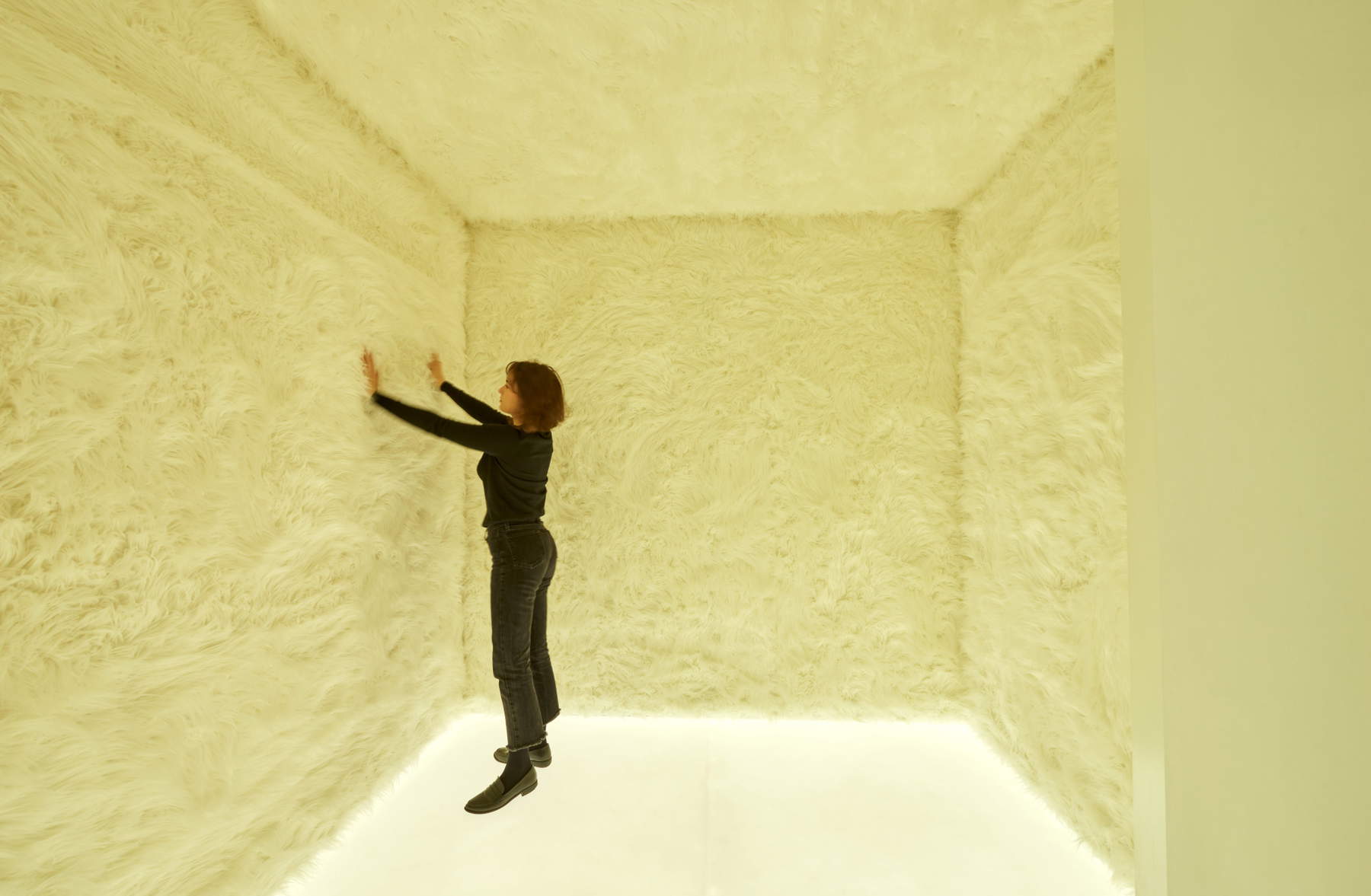Magazzino Italian Art (Cold Spring, New York) announces that it has received the gift of two life-size immersive environments designed by Piero Manzoni in 1961, thanks to the generosity of the Piero Manzoni Foundation and the Hauser & Wirth Gallery. The two works will be presented together with a selection of the artist’s works from American collections in the exhibition Piero Manzoni: Total Space, curated by Nicola Lucchi (director of Education and Research Center at Magazzino Italian Art), open to the public from Sept. 8, 2025 to March 23, 2026.
As early as 1957, Manzoni had embarked on a quest for a “new language” and “total transformation,” beginning to create the Achromes: works in plaster on canvas in which white had no allusive or symbolic value, but was a colorless surface. The series then expanded with different materials-from kaolin to absorbent cotton, styrofoam to synthetic fibers and fur-in an attempt to create colorless spaces, free of any figurative suggestion.
In 1961, driven by a desire to take a further step in the art of “total space,” Manzoni wrote to his friend Henk Peeters (1925-2013), a Dutch artist of the Zero group, hypothesizing the creation of two rooms: one entirely covered in white fur, the other in phosphorescent paint. Left unfinished due to his untimely death in 1963, these works saw new life in 2019, when the Piero Manzoni Foundation and Hauser & Wirth commissioned New York architect Stephanie Goto to realize those designs. The rooms were then presented the same year in the exhibitions Piero Manzoni: Materials of His Time at Hauser & Wirth in Los Angeles, curated by Rosalia Pasqualino di Marineo, director of the Piero Manzoni Foundation, and Piero Manzoni: Lines, Materials of His Time at Hauser & Wirth in New York.
These environments mark an unprecedented extension of the artist’s journey: on the one hand, they carry forward the logic of the Achromes, which transcend two-dimensionality to become habitable and sensory spaces; on the other, they dialogue with the ironic and conceptual vein of famous works such as Lines, balloons inflated with the artist’s breath or the provocative Merda d’artista. In all cases, the tension is the same: a play between dematerialization of the work and centrality of the body, between rejection of market rules and search for new forms of experience.
The two rooms, the Hairy Room and the Phosphorescent Room, thus transport the idea of theachrome into three-dimensional space, incorporating the visitor into a tactile, optical and epidermal experience. It is no longer a matter of observing the work, but of inhabiting it. If the Futurists had theorized the viewer “at the center of the painting,” Manzoni concretely realizes that intuition, offering an artistic experience that, while remaining immaterial and ephemeral, takes shape through the presence of the public.
Alongside the environments, the exhibition will also present one of the first Achromes from 1958, in kaolin on canvas, evidence of the radical investigation conducted by Manzoni to free painting from aesthetic formalisms and emotional excesses, entrusting the material itself with the creation of neutral surfaces. An extreme reduction of artistic language, declined with always different materials and solutions.
The exhibition at Magazzino Italian Art therefore intends to reflect on this reversal of perspective and its repercussions in post-World War II Italian art. Manzoni anticipates many of the tensions that would later characterize Arte Povera: the dematerialization of the object, the centrality of the idea and the work as a critical act.

“We are grateful to Fondazione Manzoni and Hauser & Wirth for entrusting this important gift to Magazzino, where they can now be admired along with the museum’s extensive Arte Povera collection. This gift recognizes Magazzino as a point of reference in the United States for the knowledge, conservation, study and dissemination of postwar Italian art,” said Magazzino Italian Art founders Nancy Olnick and Giorgio Spanu.
“These visionary projects by Manzoni have only recently moved from pure idea to physical reality. Now that they have been realized with the assistance of Hauser & Wirth, more than half a century since they were envisioned, we are delighted that their ideal permanent home is Magazzino Italian Art,” said Rosalia Pasqualino di Marineo, director of the Piero Manzoni Foundation and niece of the artist.
“Despite his short career, Piero Manzoni was one of Italy’s, if not the world’s, most innovative, ironic and tirelessly inventive artists,” commented Adam Sheffer, Director of Magazzino. “We are proud to exhibit the important gift of these two rooms along with several Achrome works, in which Manzoni broke with the tradition of painting in favor of an art of ’total space,’ where materials, form and presence eclipse the superficial and open up new conceptual dimensions.”
“Piero Manzoni was a forerunner of many of the themes that would later become central to Arte Povera artists: the radical experimentation with materials, the overcoming of traditional forms of painting and sculpture, the idea of the work as a sometimes totalizing, sometimes intangible experience,” said exhibition curator Nicola Lucchi. “Presenting this selection of visionary and subversive works at Magazzino means enhancing their legacy, in dialogue with our collection of postwar Italian art.”
 |
| Piero Manzoni Foundation and Hauser & Wirth donate two immersive environments by Piero Manzoni to Magazzino Italian Art |
Warning: the translation into English of the original Italian article was created using automatic tools. We undertake to review all articles, but we do not guarantee the total absence of inaccuracies in the translation due to the program. You can find the original by clicking on the ITA button. If you find any mistake,please contact us.